Ancient City Of Ipiutak Was Built By A Fair-Haired Race With Blue Eyes And Not Us – The Inuit Say
Ellen Lloyd - AncientPages.com - Located at Point Hope, Alaska, Ipiutak was once a flourishing city where people lived, traded, and practiced unusual rituals. Only ancient ruins and artifacts are left today, but the site is of great archaeological and historical importance.
Unraveling the mystery of Ipiutak could help us gain vital knowledge about a vanished culture and the early inhabitants of North America.
Fossil ivory figurine. Okvik. Punuk Islands. Credit: Froelich Rainey, Penn Museum
Unfortunately, this is easier said than done because there is conflicting information about the ancient city of Ipiutak. The site is estimated to be at least 2,000 years old. The community collapsed around 800 C.E., and archaeologists are trying to piece together who built the ancient city and when.
The builders of Ipiutak were sophisticated people and more advanced than the Eskimos. Who were they? Where did they come from? What happened to them?
Ipiutak was discovered during archaeological excavations in 1939 and 1940. It has been labeled as the largest site of its kind in the Eskimo region.
The sea destroyed some of the houses, but there are still enough ruins left to investigate. The ancient city was designed on a grid pattern. Its architecture reminds us of the ancient cities of the Indus Valley.
Scientists have discovered about 600 abandoned houses, one thousand unusual artifacts, and a huge cemetery that raises many interesting questions about the true inhabitants of Ipiutak.
Ipiutak Was Built By A Fair-Haired and Blue Eyed Race – The Eskimos Say
The Ipiutak are famous for producing sophisticated and decorative carvings in ivory, wood, bone, and stone artifacts, but their work is different.
Burial mask from Ipiutak grave, Larsen and Rainey collections, in Danish National Museum, Copenhagen. Phil Mcgillivary, Researchgate
According to Phil Mcgillivray of the U.S. Coast Guard, "the complex and unusual nature of the carved ivory material found at Ipiutak immediately confirms the material as unique. Ipiutak specimens show artistic patterns distinct from those of related cultures."
The is a disagreement regarding the original builders of Ipiutak. Some archaeologists say the Eskimos constructed the ancient city, but they deny this. According to the legends of the Eskimos, the ancient city of Ipiutak was built by a fair-haired and blue-eyed race. Their legends also inform that white giants lived in Ipiutak until the War of the Gods.
Who could the legends of the Inuit refer to? Was Ipiutak once a Viking settlement, perhaps?
Inhabitants Of Ipiutak Were Not Primitive
Some archaeologists like Rainey Froelich, who excavated there, think people from Asia built Ipiutak. "Although this culture precedes known types of Eskimo culture on the Arctic coast, it is not primitive, and it diverges so widely from familiar Eskimo patterns that I am led to believe its origin will be found outside the Arctic regions, probably in eastern Asia," Froelich said.
At Ipiutak, scientists discovered more than 5,000 graves, some of which revealed this culture practiced unusual customs, but they also possessed knowledge of more advanced science. Ipiutak grave specimens date mainly around 350A.D., ranging from @100A.D.-1000 A.D.
Ivory cub walrus. Ipiutak, Point Hope. Credit: Froelich Rainey, Penn Museum
Researchers found ancient skulls with artificial eyeballs of ivory inlaid with jet inside the graves. Some bodies had ivory nose plugs shaped like bird's heads, and others had ivory death masks. Many graves contained small mummified animals, also with eyes inlaid with obsidian. Based on the findings, it seems inhabitants of Ipiutak practiced shamanism, and some archaeologists suggest their works remind Scthyo-Siberian cultures of Ukraine.
Ipiutak was not a small settlement. According to Froelich, this was once "a settlement with a population of several thousand, which must have been larger than the modern city of Fairbanks of Alaska."
The ancient inhabitants of Ipiutak left valuable clues, but we still do not know who the original builders were. Perhaps this enigmatic ancient city was built by a fair-haired race with blue eyes, as the Inuit say, or maybe these people did originate from Asia or Siberia. Some think they could be related to the Dorset culture, but these are only speculations, and we must confess that Ipiutak still remains shrouded in mystery.
Updated on July 23, 2022
Written by Ellen Lloyd – AncientPages.com
Copyright © AncientPages.com All rights reserved. This material may not be published, broadcast, rewritten or redistributed in whole or part without the express written permission of AncientPages.com
Expand for referencesRainey, Froelich. "The Ipiutak Culture at Point Hope, Alaska." American Anthropologist, New Series, 43, no. 3 (1941): 364-75. http://www.jstor.org/stable/663137.
Mcgillivary, Phil. (2005). Recovering the lost treasures of Ipiutak (Pt. Hope), Alaska. Proceedings of MTS/IEEE OCEANS, 2005. 2005. 1122 - 1129 Vol. 2. 10.1109/OCEANS.2005.1639907.
National Service PArk - Ipiutak National Historic Landmark
Larsen, Helge. "The Position of Ipiutak in Eskimo Culture." American Antiquity 20, no. 1 (1954): 74-79. doi:10.2307/276726.
More From Ancient Pages
-
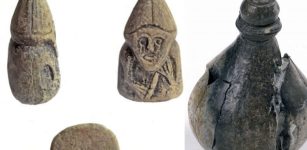 Old Norse Settlers Traded Walrus Ivory With Kyiv – Spectacular Archaeological Finds Reveal
Archaeology | Jun 16, 2022
Old Norse Settlers Traded Walrus Ivory With Kyiv – Spectacular Archaeological Finds Reveal
Archaeology | Jun 16, 2022 -
 The Magnificent Yule Goat In Gävle, Sweden Has Finally Arrived
Christmas Traditions | Dec 2, 2024
The Magnificent Yule Goat In Gävle, Sweden Has Finally Arrived
Christmas Traditions | Dec 2, 2024 -
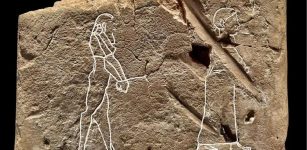 World’s Oldest Depiction Of A Ghost Discovered On 3,500-Year-Old Babylonian Tablet
Archaeology | Oct 20, 2021
World’s Oldest Depiction Of A Ghost Discovered On 3,500-Year-Old Babylonian Tablet
Archaeology | Oct 20, 2021 -
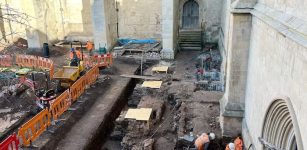 Ancient Roman Street And Buildings Discovered Beneath Exeter Cathedral
Archaeology | Apr 4, 2023
Ancient Roman Street And Buildings Discovered Beneath Exeter Cathedral
Archaeology | Apr 4, 2023 -
 On This Day In History: Sir Thomas Brisbane, Astronomer, Soldier And Governor Was Born – On July 23, 1773
On This Day In History | Jul 23, 2016
On This Day In History: Sir Thomas Brisbane, Astronomer, Soldier And Governor Was Born – On July 23, 1773
On This Day In History | Jul 23, 2016 -
 Ceramics Are Telling The Story Of 14th Century Chinese Trade
News | Jun 28, 2023
Ceramics Are Telling The Story Of 14th Century Chinese Trade
News | Jun 28, 2023 -
 Mystery Of The British Pompeii Deepens – Bronze Age Settlement Destroyed By Dramatic Fire
Archaeology | Jun 23, 2019
Mystery Of The British Pompeii Deepens – Bronze Age Settlement Destroyed By Dramatic Fire
Archaeology | Jun 23, 2019 -
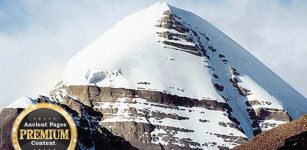 Mysterious Mount Kailash: Secrets Of The Man-Made Pyramid And Entrance To The City Of The Gods
Ancient Mysteries | Oct 27, 2014
Mysterious Mount Kailash: Secrets Of The Man-Made Pyramid And Entrance To The City Of The Gods
Ancient Mysteries | Oct 27, 2014 -
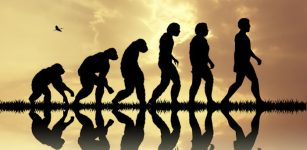 Mystery How Humans Lost Their Body Hair Solved By Scientists
Archaeology | Jan 4, 2023
Mystery How Humans Lost Their Body Hair Solved By Scientists
Archaeology | Jan 4, 2023 -
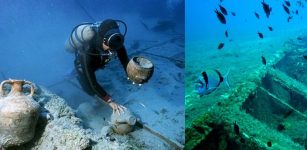 Crimean Atlantis: Remarkable Ancient Underwater City Of Akra
Featured Stories | Mar 6, 2017
Crimean Atlantis: Remarkable Ancient Underwater City Of Akra
Featured Stories | Mar 6, 2017 -
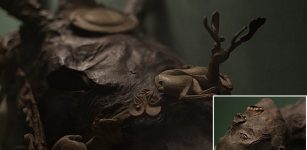 Earliest And Largest Scythian Princely Tomb Discovered In Siberia By Swiss Archaeologist
Archaeology | Jan 16, 2018
Earliest And Largest Scythian Princely Tomb Discovered In Siberia By Swiss Archaeologist
Archaeology | Jan 16, 2018 -
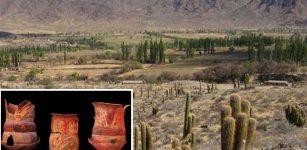 Pre-Inca Societies In The Andes Lacked Hierarchical Leadership And Shared Power Before The Incas Arrived
Archaeology | Dec 13, 2017
Pre-Inca Societies In The Andes Lacked Hierarchical Leadership And Shared Power Before The Incas Arrived
Archaeology | Dec 13, 2017 -
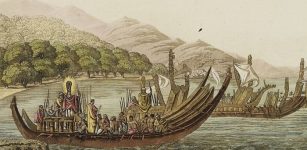 Stone Artifacts Reveal Long-Distance Voyaging Among Pacific Islands During The Last Millennium – New Study
Archaeology | Apr 21, 2023
Stone Artifacts Reveal Long-Distance Voyaging Among Pacific Islands During The Last Millennium – New Study
Archaeology | Apr 21, 2023 -
 Extraordinary Discovery Of 2,000-Year-Old Bronze Statue Rewrites Etruscan-Roman History
Archaeology | Nov 8, 2022
Extraordinary Discovery Of 2,000-Year-Old Bronze Statue Rewrites Etruscan-Roman History
Archaeology | Nov 8, 2022 -
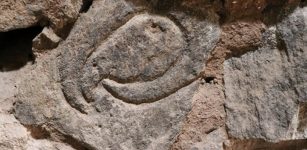 3,500-Year-Old Neo-Hittite Hieroglyphs Found In Cappadocia
Archaeology | May 27, 2019
3,500-Year-Old Neo-Hittite Hieroglyphs Found In Cappadocia
Archaeology | May 27, 2019 -
 Stunning Facial Reconstruction Of ‘Siberian Tutankhamun’ And His ‘Queen’ Who Died 2,600 Years Ago
Archaeology | Jan 12, 2021
Stunning Facial Reconstruction Of ‘Siberian Tutankhamun’ And His ‘Queen’ Who Died 2,600 Years Ago
Archaeology | Jan 12, 2021 -
 12,000-Year-Old Burial Of Female Shaman Unearthed In Turkey
Archaeology | Jul 31, 2024
12,000-Year-Old Burial Of Female Shaman Unearthed In Turkey
Archaeology | Jul 31, 2024 -
 Venus Cloacina: Roman Goddess Of Sewers And Drains
Featured Stories | Dec 19, 2019
Venus Cloacina: Roman Goddess Of Sewers And Drains
Featured Stories | Dec 19, 2019 -
 On This Day In History: Taoist Monk Discovers Dunhuang Manuscripts In Mogao Caves, China – On June 25, 1900
News | Jun 25, 2016
On This Day In History: Taoist Monk Discovers Dunhuang Manuscripts In Mogao Caves, China – On June 25, 1900
News | Jun 25, 2016 -
 World’s Oldest Dictionaries Are 4,500-Year-Old Cuneiform Tablets Discovered In Ebla
Ancient History Facts | Aug 19, 2016
World’s Oldest Dictionaries Are 4,500-Year-Old Cuneiform Tablets Discovered In Ebla
Ancient History Facts | Aug 19, 2016



